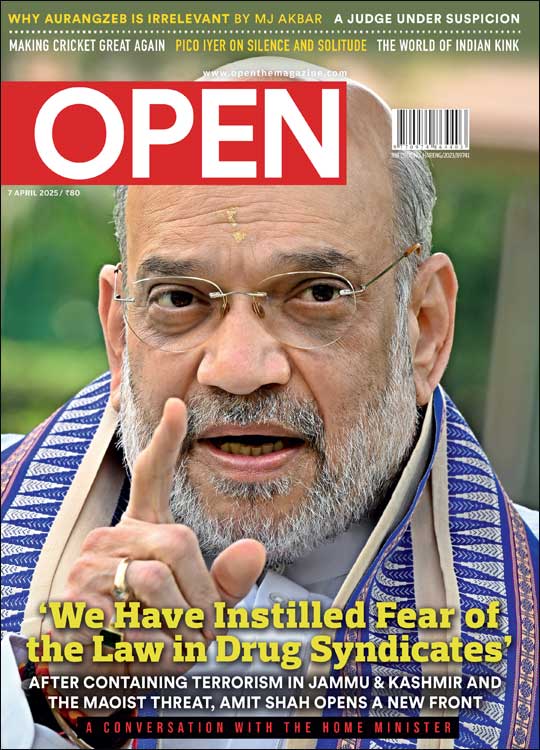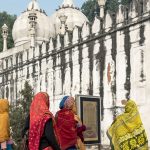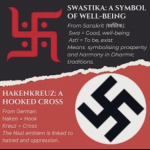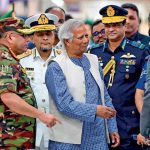Carbon
Sifting through the ashes of a charred history
 Jaspreet Singh
Jaspreet Singh
 Jaspreet Singh
|
02 Nov, 2013
Jaspreet Singh
|
02 Nov, 2013
/wp-content/uploads/2015/11/1984-charred2.jpg)
Sifting through the ashes of a charred history
Those who begin by burning books will end by burning people. In Delhi, sayings like this are often misunderstood. The Indian capital is one of those rare cities where such wisdom gets completely inverted: those who begin by burning people will end by burning books.
In November 1984, politicians of India's ruling party directed mobs to burn alive as many Sikh citizens as possible. Members of Parliament and Cabinet Ministers distributed kerosene oil and white phosphorous. Witness testimonials talk about the innovative use of rubber tyres to simultaneously trap the target, create thick clouds of toxins and facilitate combustion.
After burning humans, the thugs took meal breaks and then burned more humans and then burned copies of the Adi Granth in gurdwaras. Sometimes they burned books and humans simultaneously.
The Adi Granth includes approximately 6,000 poetic compositions by 43 saints who lived in the vast Subcontinent. The work included in the book defies caste, creed, region or religion—work created over five centuries.
In short, the men burned not only what was sacred to them, but they also burned the very idea of ‘coming together as equals’. They also burned Memory.
I was in Delhi in 1984. I saw the blackened remains of books. I saw ash particles floating in air.
A few days later, the head of the Government delivered a chilling speech to the nation justifying the burnings (and lootings and gang rapes). It is only ‘natural’, he said. When a Big Tree Falls, the Earth Shakes a Little. He rewarded accused ministers and MPs, and announced medals for senior police officers who had facilitated the atrocity.
The Congress Party conducted its first major pogrom exactly 99 years after it was formed, and exactly 100 years after it was conceived in the hill-station of Shimla. In a piece entitled ‘Thomas Bernhard in New Delhi’ for The New York Times’ blog India Ink, I alluded to the nation’s inability to mourn. No Partition memorials exist, for instance. The very idea of creating a November 1984 memorial would be repulsive to the ruling party. It has instead tried to impose ‘forgetorials’ and the perpetual mourning of so-called ‘great leaders’. The piece was accompanied by Gauri Gill’s black-and-white photos of survivors; photos that carry a vast accumulation of time and traces of the horrific. People stare out, urging ordinary citizens to do something. Photographs of memory, silence, complicated grief and collective trauma.
Twenty-eight years after the atrocity, in September 2012, the Congress published a thick book: A Centenary History of Congress, Volume V: 1964-84. Co-edited by Mukherjee and Mukherjee, the 716-page book was released during the leadership of Congress President Sonia Gandhi. One of the editors, Pranab Mukherjee, is now President of India. The editors claim the Centenary History series is an ‘important historical work’ in which 100 years of ‘Indian politics’—not just Congress politics— have been treated with ‘unparalleled thoroughness’. ‘The fifth and final volume reports on a period of the Congress that spanned Indira Gandhi’s rise to PM of India as well as her assassination, the rapid development and reform of the country…’
One does not expect a pogrom-conducting (and pogrom-denying) party to excavate honestly its own crimes, but one is curious nevertheless. Leafing through the pages one realises that November 1984 is neither an Event nor a Chapter. Mukherjee and Mukherjee lump post-partition India’s unprecedented pogroms together under a chapter titled ‘Punjab Crisis’. As part of an initial appraisal, I began counting the number of words devoted to November 1984.
One. Two. Three… Hundred… Four hundred.
Four-hundred words.
One word for every ten Sikh citizens exterminated in Delhi alone.
After a careful reading, I realised that only 40-odd words of the 400 deal with the reality of November 1984, though even those lack the ‘unparalleled thoroughness’ promised by the editors. One word for every 100 people exterminated by the party in Delhi.
The catastrophe is first mentioned mid-paragraph, towards the end of the long chapter. The paragraph begins with 18 words almost justifying the murder of innocent civilians. ‘While certain amount of anger and resultant violence on 31 October 1984 is understandable…’
Most sentences follow the same tone, either beginning or ending in an odd manner. What ‘surprised’ everyone was that top Congress leaders were ‘suspected of flaming the anti-Sikh passions’. Only four leaders are named, their crime unacknowledged. While libraries all over the world are filled with books and documents that detail not just the crimes but also the precise mechanisms behind them, for India’s Congress party, to this day, the names of the guilty exist only within the realm of suspicion.
Four words talk about women. Not as citizens, but as objects who belong to Sikh men: ‘Rape of their womenfolk’.
The chillingly sinister justification provided by Prime Minister Rajiv Gandhi is strangely absent. Not even a trace. With ‘unparalleled thoroughness’, the editors have omitted the rewards received by guilty MPs and Cabinet ministers from the Prime Minister. Perhaps November 1984 never happened? (Indian diplomats in foreign missions still refer to this in terms of a ‘conspiracy theory’.) There is no mention of the Congress party’s massive ad-campaign vilifying minorities to win an important election, or the fact that two of the accused hold important positions within the party, one of them a senior Cabinet Minister in the current administration.
‘Several prominent citizens organisations… condemned… the failure of the state. Several inquiry commissions… censured the official machinery for failure to maintain law and order.’ Human rights organisations didn’t call November 1984 a ‘failure’ of the State, or a ‘failure to maintain law and order’. They called it a planned and systematic attack on Sikh citizens by members of the government.
There is no mention of the perverse misuse of language to describe what happened. ‘Riots’, for instance. The book doesn’t even pose this as a question.
Not a word about the extraordinary miscarriage of justice for which the party is directly responsible. No discussion about the persistent use of words like ‘natural’ and ‘spontaneous’. Nothing at all.
Instead, the party chooses to see the elevation of a ‘turbaned Sikh’ to Prime Minister as some sort of ironic justice.
Seventy-six words are devoted to Manmohan Singh; 52 more words are devoted to Manmohan Singh’s farcical ‘apology’: ‘Sikh history has taken a full circle.’ Perhaps it is not an absurd idea, even at this late stage, to check this statement with the women who were brutally raped or those who lost 21 members of their extended family in one single day. Or to verify the ‘turning point’ with the woman who, to this day, displays her husband’s hair and amputated finger.
Where exactly are those 400 words headed? Towards what kind of closure? How does a narrative like this end, really?
This is perhaps the most astonishing thing about those 400 words— 400 words headed at the speed of light towards more and more shamelessness. Near the end of the paragraph ‘about this dismal situation’, the astonishing Congress party takes credit for the good work done by students and professors of Jawaharlal Nehru University, saving lives in November 1984.
Wise as it has become, the party doesn’t hesitate to issue instructions to Sikhs. Take refuge, it tells them, in the Adi Granth (the same book burned in large numbers in November 1984): Let yourself be lovingly absorbed in the Lord.
Somewhere, buried in those 400 words, there is also a guiltless, shameless use of a little girl’s diary. A quote from Anne Frank: Our religion will teach the world and all the people in it about the goodness, and that’s the reason, the only reason we will have to suffer.
Minutes after reading that quote, in a state of disquiet, I stumbled upon Jacques Derrida’s The Work of Mourning, which led me to Sarah Kofman’s poem Shoah (or Disgrace):
We will not pardon […] for this crime, / Render it null, make it un-happened, / Nullify it in forgiveness and forgetting.
…
So that those who died
…
that their memory may not be murdered / Let us not forget this Event!
Memory. Forgetting. Trauma.
How does one write the histories of burned books and a burned people? Histories of collective silences and the moral ruin of a nation? How does one comprehend lack of justice?
For anyone interested in State-sponsored genocidal violence in India, Justice Ranganath Misra’s name keeps recurring, luminously. A pioneer of sorts, he is an example to future generations.
If there were such a thing as a shamelessness scale, he would belong to the uppermost, brightest section. As a sitting judge of the Supreme Court, Misra headed the first ever commission to investigate November 1984. (Several other farcical commissions followed.) In March 2013, when I interviewed retired history professor and human rights activist Uma Chakravarty in her living room in South Delhi, she revealed something shocking a lawyer friend told her a few years ago. Uma kept her eyes shut while recalling the details. The young lawyer had witnessed first-hand Justice Ranganath Misra’s inquiry commission. A Sikh man had been inconsolable during the proceedings. He had filed an affidavit; his son had been murdered brutally in November 1984.
Sardarji, Justice Ranganath Misra had said, your story is a bit like this one. Listen to me carefully. Imagine you and your son are going somewhere on a scooter. You stop at the railway crossing. Zillions of cars and scooters are waiting for the train to pass by. No one has any idea about a huge vulture flying high up in the skies, right above you. In the vulture’s beak, there is a snake. Suddenly, it slithers and manages to free itself; the snake falls down, and finally lands on your son, sitting behind you on your scooter. The snake bites his neck. Your son dies that very instant. And that very instant, the vulture lands, collects the snake and flies away. See, it is no one’s fault. Do you think it is somebody’s fault? Not really. This is exactly what happened to your family. It is no one’s fault.
One of the most significant books to examine the sinister role played by the Judiciary after 1984 was When a Tree Shook Delhi, co-written by Manoj Mitta and HS Phoolka. A Supreme Court lawyer, Phoolka has worked tirelessly over the last 29 years for justice for victims.
Two chapters in the book detail the manner in which Justice Misra conducted the ominous inquiry. On the surface, it was an in-camera inquiry (apparently to protect witnesses), but all along, the judge released witness identities to lawyers working for accused Congress leaders, representing anti-victim groups that claimed the carnage was ‘spontaneous’. The lawyers representing Congress leaders ‘also received advance information from the commission about when each victim was due to depose… This information was used to intimidate the victims just before their deposition.
At times, victims received the commission’s summons and culprit’s threats simultaneously. A number of victims complained about the threats, but to no avail.’ In some cases, security tasks were assigned to the same local police responsible for facilitating atrocities only six months earlier.
While the pogrom conductors ‘and police were allowed to victimise the Sikhs all over again,’ Phoolka writes, ‘the media and other public spirited citizens were shut out.’ Thousands of fraudulent anti-victim ‘affidavits’ also surfaced then.
All along, Justice Misra shielded the culprits and suppressed the truth. He didn’t even allow the victims’ representatives access to government documents or an opportunity to cross-examine the Lieutenant Governor of Delhi, the Police Commissioner of Delhi and seven other high-ranking officials. When the representatives insisted, the judge revealed that ‘he had already examined five of the officials’, thus excluding the victims’ lawyers from crucial parts of the investigation. ‘In a bizarre innovation, Misra was holding an in-camera inquiry within an in-camera inquiry.’
‘The discovery of the secret examination of officials was the last straw for us,’ writes Phoolka. ‘It dawned on us that we were just being taken for a ride.’ And because of the ‘gag order Justice Misra had passed initially, nothing was being reported in the press.’ After much agonising, the Citizens Justice Committee, representing the victims, submitted a letter of withdrawal.
Around then, Justice Misra asked Mr Phoolka not to get ‘carried away’. He instructed the young lawyer to quit the CJC and work independently instead. ‘He made a more blatant attempt to co-opt me. I tried to cut him short [by saying] that I was very much party to the decision. Misra said that if I accepted his offer to participate in the inquiry, he would, in turn, see to it that I was ‘suitably rewarded’.’
Several Supreme Court lawyers acknowledge that Justice Misra, with strong links to the party, was perhaps one of the most corrupt judges in post-Independence India.
In his final report, Misra gave ‘a clean chit to Congress party as well as its leaders and the government… The police were accountable for errors of omission and commission…. But the upshot of all his exertions to cover up political complicity was that no individual, whether in the police or the ruling party, was indicted for his complicity in the massacre. Even as he maintained that he could not indict any of the culprits, Justice Misra went out of his way to exonerate HKL Bhagat and Rajiv Gandhi.’
Ranganath Misra went on to become the 21st Chief Justice of the Indian Supreme Court in 1990. He died a natural death at the age of 85 on 13 September 2012. In his condolence message, Prime Minister Manmohan Singh said these chilling words: “Justice Misra was an eminent jurist and parliamentarian who distinguished himself in the high public offices he held.”
From 1998 to 2004, Misra was appointed a Member of Parliament (Upper House) by the Congress Party. In 2004, after the party returned to power, he was asked to look into various issues related to Linguistic and Religious Minorities. In 1993, nine years after the genocidal pogroms, he was appointed the first Chairman of the National Human Rights’ Commission of India.
Jaspreet Singh is a writer who grew up in India and moved to Canada in 1990. His new novel Helium is, in the author’s own words, the story of a grand crime and the individual and collective trauma it caused. It is also the story of the collective silence and extraordinary miscarriage of justice in the aftermath of the violence of 1984. Helium will be available in India, published by Bloomsbury India, on 31 October 2013
About The Author
CURRENT ISSUE
‘We Have Instilled Fear of the Law in Drug Syndicates,’ says Amit Shah
MOst Popular
4

/wp-content/uploads/2025/03/Cover_Amit-Shah.jpg)











More Columns
BJP allies redefine “secular” politics with Waqf vote Rajeev Deshpande
Elon Musk attracts sharp attack over ‘swastika’ from Indians on social media Ullekh NP
Yunus and the case of a "land locked" imagination Siddharth Singh